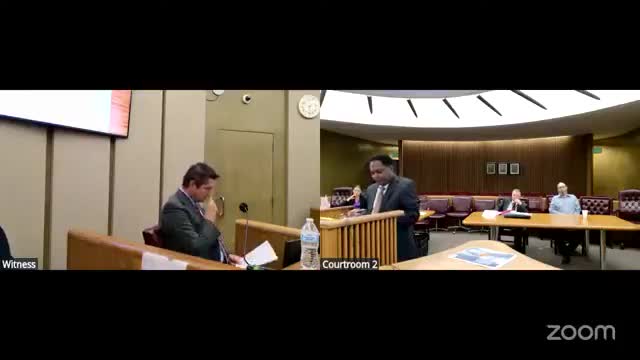Expert Confirms Fentanyl Overdose as Cause of Death in Toxicology Report
July 17, 2025 | 252nd District Court, District Court Judges, Judicial, Texas
This article was created by AI summarizing key points discussed. AI makes mistakes, so for full details and context, please refer to the video of the full meeting. Please report any errors so we can fix them. Report an error »

In a recent government meeting held in Texas, discussions centered around the alarming rise of fentanyl-related fatalities, underscoring the urgent need for public awareness and intervention. The meeting featured expert testimony that detailed the lethal nature of fentanyl, a potent opioid that has become a significant contributor to drug overdose deaths across the nation.
During the session, a medical expert presented findings from a lab report indicating that a deceased individual had a blood concentration of 13 nanograms of fentanyl per milliliter. This level is notably above the threshold of 3 nanograms per milliliter, which is often associated with fatal outcomes. The expert explained that while fentanyl can be used therapeutically for pain management, its illicit use has spiraled into a public health crisis, with the drug being manufactured and distributed illegally, often mixed with other substances.
The expert elaborated on the variability of fentanyl's effects, noting that individuals with different health backgrounds might react differently to the same concentration of the drug. For instance, a healthy person might succumb to lower levels of fentanyl, while someone with a history of opioid use may tolerate higher levels without immediate fatal consequences.
In addition to fentanyl, the toxicology report revealed the presence of other substances, including trazodone and ethanol, which could have contributed to the individual's death. However, the expert emphasized that fentanyl was the most lethal substance detected, asserting that the combination of drugs found in the deceased's system led to acute intoxication, classified as an accidental death.
The meeting highlighted the critical need for education on the dangers of fentanyl and the importance of addressing the ongoing opioid epidemic. As fentanyl continues to infiltrate communities, the discussions served as a stark reminder of the potential consequences of substance misuse and the urgent need for effective prevention strategies. The expert's testimony not only shed light on the medical implications of fentanyl use but also called for a collective response to combat this growing public health threat.
During the session, a medical expert presented findings from a lab report indicating that a deceased individual had a blood concentration of 13 nanograms of fentanyl per milliliter. This level is notably above the threshold of 3 nanograms per milliliter, which is often associated with fatal outcomes. The expert explained that while fentanyl can be used therapeutically for pain management, its illicit use has spiraled into a public health crisis, with the drug being manufactured and distributed illegally, often mixed with other substances.
The expert elaborated on the variability of fentanyl's effects, noting that individuals with different health backgrounds might react differently to the same concentration of the drug. For instance, a healthy person might succumb to lower levels of fentanyl, while someone with a history of opioid use may tolerate higher levels without immediate fatal consequences.
In addition to fentanyl, the toxicology report revealed the presence of other substances, including trazodone and ethanol, which could have contributed to the individual's death. However, the expert emphasized that fentanyl was the most lethal substance detected, asserting that the combination of drugs found in the deceased's system led to acute intoxication, classified as an accidental death.
The meeting highlighted the critical need for education on the dangers of fentanyl and the importance of addressing the ongoing opioid epidemic. As fentanyl continues to infiltrate communities, the discussions served as a stark reminder of the potential consequences of substance misuse and the urgent need for effective prevention strategies. The expert's testimony not only shed light on the medical implications of fentanyl use but also called for a collective response to combat this growing public health threat.
View full meeting
This article is based on a recent meeting—watch the full video and explore the complete transcript for deeper insights into the discussion.
View full meeting
